Fixing Broken Ceramic or Sculpture requires the right adhesive. Epoxy or Cyanoacrylate Super Glue can work, but they excel in different areas. Epoxy creates a super strong bond, perfect for repairs that experience stress or hold weight. It also fills small cracks and gaps while giving you more time to position the pieces before they harden.
It’s trickier to use since it involves mixing two parts and takes longer to set completely. Super glue, on the other hand, is a breeze to use with its single-step application and fast curing time. It also dries clear, making it a potential choice for cosmetically important repairs. The downside is that super glue offers a weaker bond, doesn’t fill gaps, and can become brittle itself. So, for strength and gap filling, choose epoxy.
Differences between Epoxy or Cyanoacrylate Super Glue used for fixing broken ceramic or sculpture
Super glue and epoxy are both adhesives used for fixing broken ceramics and sculptures, but they have some key differences that can affect the outcome of your repair.
Epoxies
Adhesives and epoxies stand out as the titans of strength and resilience. When faced with a broken ceramic or sculpture, epoxies offer a powerful solution for mending and restoration. Their true claim to fame lies in their ability to create an incredibly strong bond.
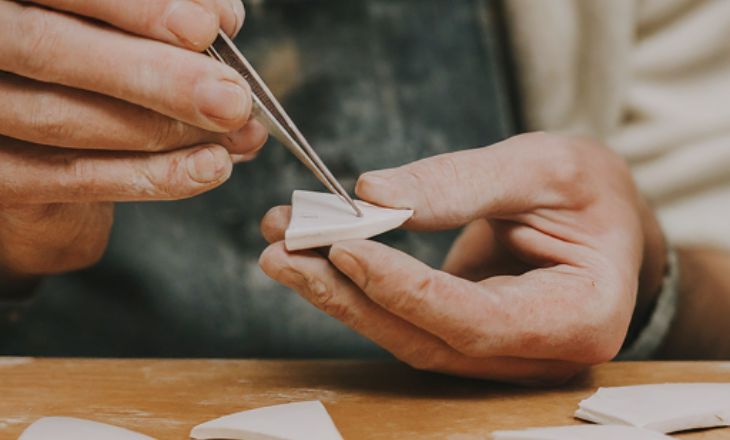
Super glues may struggle under pressure, but epoxies can withstand significant stress, making them ideal for repairs that need to hold heavier objects or endure constant wear and tear. This strength translates to a restored functionality for your cherished possessions, allowing them to be used and enjoyed once again.
Epoxies don’t stop at just bonding. They possess the remarkable ability to fill voids and gaps between broken pieces. This makes them perfect for tackling those pesky cracks and chips that often plague ceramics and sculptures. By effectively bridging these gaps, epoxies create a more seamless and aesthetically pleasing restoration.
Super Glues, Cyanoacrylate, Krazy / Crazy Glue
Super glue, also known as cyanoacrylate glue (and popularized by brands like Krazy Glue), is a handy tool for quick repairs around the house. Its strength lies in its simplicity and lightning-fast bond formation.
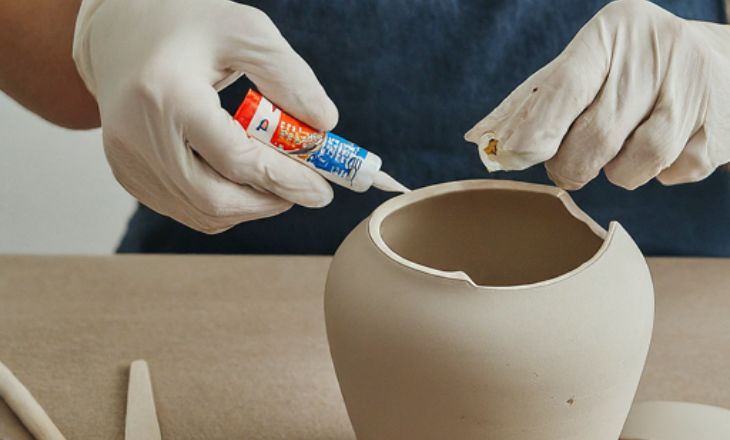
The Power of Cyanoacrylate
Superglue works through a scientific marvel called cyanoacrylatization. This simply means that when applied, it reacts with moisture in the air or on the surfaces being bonded, creating a strong connection in seconds. This speed makes it ideal for fixing a variety of materials like ceramics, wood, plastics, and even metal.
Cementing and Filling in Gaps
Super glue is great for sticking things together quickly, but it can’t fix anything with a gap between the pieces. Epoxy is the best glue for ceramic repair. It’s thicker and stronger, so it can fill in small cracks and holes between broken pottery pieces while gluing them together. Ceramic glue provides a strong and durable bond for repairing broken pottery and sculptures.
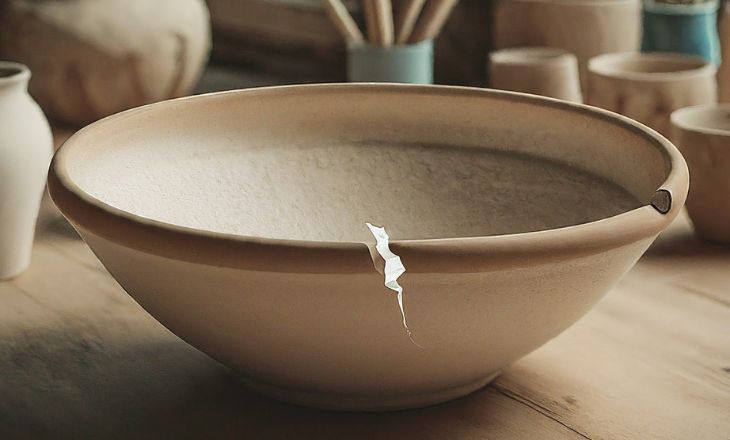
This means even if your broken treasure isn’t a perfect fit anymore, epoxy can act like a bridge to fix it up as well as new.
Epoxies Setting Time
Epoxy’s setting time isn’t a single, fixed number. It’s a two-act play with working time and cure time. Working time is your golden window after mixing the epoxy. During this period, usually lasting from a few minutes to half an hour, you can adjust the position of your broken pieces and ensure a perfect fit.
Once this window closes, the epoxy starts its cure. While it might feel set after working time, it’s still hardening for several hours or even days. For most epoxies, reaching full strength takes a cool 7-14 days at room temperature. Remember, warmth speeds up curing while cold temperatures put it on hold. The amount of epoxy used and the specific formula can also play a role in setting time.
When to use slower-setting epoxy?
Reach for slower-setting epoxy when you need more time to work on your project. Fast-curing varieties harden in minutes, but slower-setting epoxies give you a window of 30 minutes to an hour or more for positioning, adjusting, or applying the epoxy over larger areas. This extended working time is especially beneficial for intricate projects or those requiring precise alignment.pen_spark
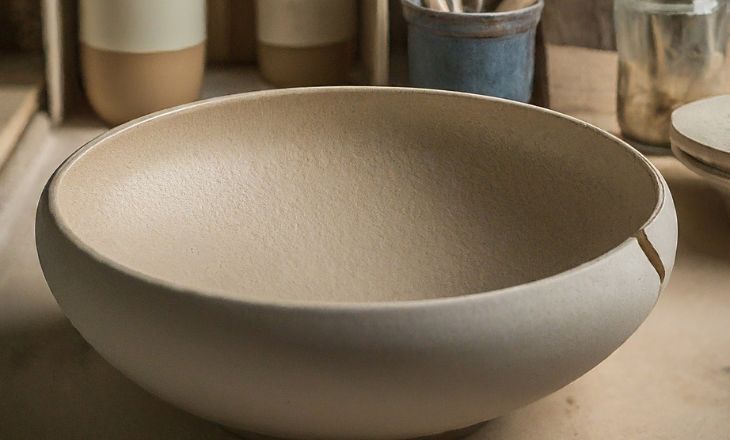
Forget the time pressure for small repairs. Those quick-setting, 5-minute epoxies are ideal for situations where you need to secure tiny items fast. Spreading glue over larger surfaces requires a different approach. While slower-setting epoxies have traditionally been known for their superior strength, some newer fast-setting options are catching up.
High-Temperature Failure
High-temperature epoxy reigns supreme in the heat department, so it’s important to consider the specific temperature range you’ll need. Epoxy formulations vary, with some offering continuous high-heat resistance up to 400°F (200°C) and others reaching up to 2000°F (900°C) for short durations.
Super glue is a trooper, but it doesn’t like things too hot. While it can handle some heat, anything above 200°F (93°C) will weaken its grip. It can withstand scorching temperatures up to 2000°F (900°C). Even superheroes have limits. If things get any hotter, the epoxy’s molecules get scrambled, making it soft and useless. Remember, for hot stuff, stick with high-temperature epoxy, and leave the super glue for cooler repairs.
Repair Line Thickness and Color
Super glue is like a thin white line when it dries, perfect for small cracks you don’t want to see much. Epoxy, on the other hand, can be a bit more noticeable. It comes in clear or yellow colors, and the glue itself is thicker, leaving a more visible line.
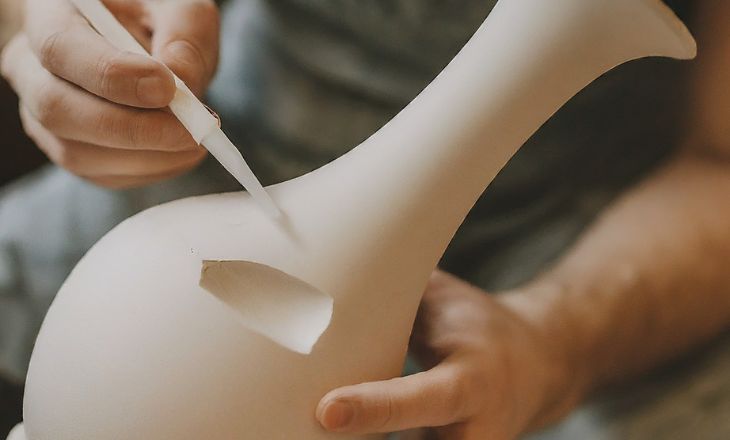
If you plan on hiding the repair later with paint or touch-up materials, you can choose the stronger epoxy regardless of color. But, if you want the repair line itself to be invisible, then clear super glue might be a better option for small cracks. You’ll need a specialized glue for ceramics to ensure a strong and lasting bond when repairing pottery or ceramic items.
Cleaning
Don’t be tempted to wipe away messy epoxy right after you squeeze it out! Leaving it to harden a bit first is actually better. This prevents the epoxy from moving around and making a bigger mess. Be extra careful if you’re working with something delicate like soft pottery. Scraping off the epoxy might scratch the surface and cause more damage. So, for soft materials, it’s best to be super precise with your epoxy application in the first place to avoid needing any cleanup at all.
Comparing Kintsugi with Modern Ceramic Repair Techniques
The methods and philosophies behind Kintsugi and the use of epoxy or cyanoacrylate differ, the common ground lies in the goal of repairing and valuing broken items. Both approaches recognize the worth of restoration, whether through the artistic celebration of Kintsugi or the practical efficiency of modern adhesives. The choice between them depends on whether one values the history and aesthetic enhancement of the object (Kintsugi) or aims for a seamless and functional restoration (epoxy or cyanoacrylate).
Conclusion
When deciding between epoxy and cyanoacrylate (super glue) for repairing broken ceramics or sculptures, it’s essential to consider the specifics of the break and the desired outcome. Epoxy offers superior strength, gap-filling capabilities, and water resistance, making it ideal for heavy-duty repairs and items exposed to moisture. Its longer setting time also allows for careful adjustments.
However, cyanoacrylate provides a quick, strong bond suitable for clean breaks and precise repairs, though it may be less durable under stress.
FAQ’s
What are some important facts on super glue?
Super glue creates an incredibly strong adhesive bond. Because of cyanoacrylate glue’s unique properties, the bond is nearly unbreakable. It’s so powerful, that it can hold outdoor materials together, such as broken or cracked eavestroughs, through all forms of inclement weather.
How to fix cracked ceramic?
Apply super glue or epoxy to the sides of the cracked pieces of the bowl. Push the pieces together and hold them in position for at least 10 minutes. Remove any glue residue with a piece of cloth. Let the adhesives dry overnight before using the bowl again.
